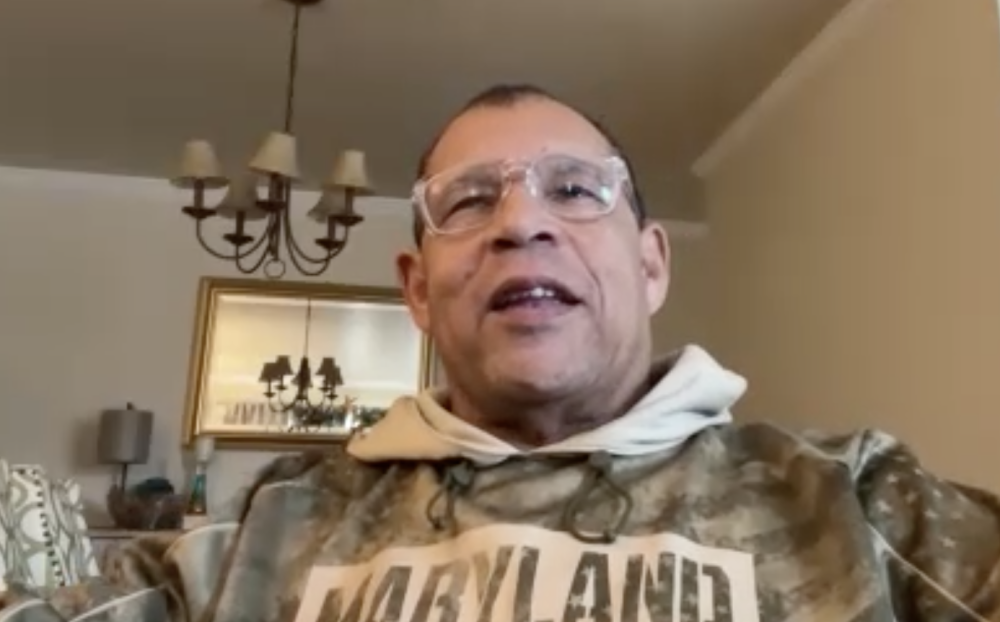Everything comes back to Lamar Jackson for the Ravens.
That’s definitely true of the 2023 salary cap — set at $224.8 million — as Baltimore weighs its options with the star quarterback after two years of off-and-on contract talks. General manager Eric DeCosta noted last month that the Ravens have more cap flexibility now than they did a decade ago before ultimately signing franchise quarterback Joe Flacco to a record deal weeks after Super Bowl XLVII, but there’s no denying the ramifications of Jackson’s uncertain status on the salary cap and multiple veterans under contract.
Though OverTheCap.com currently projects the Ravens to have around $27 million in cap space entering free agency, that doesn’t account for Jackson at all. A long-term contract extension would not only keep the 26-year-old in Baltimore for years to come, but it would likely leave flexibility to make some additions and alleviate the need for more drastic moves to create cap space. The non-exclusive franchise tag for a quarterback is $32.416 million for 2023 while the exclusive tag is projected to cost $45 million, making it clear that DeCosta will face some very difficult roster decisions to allow Jackson to play on the tag. And while trading Jackson would fetch a lucrative return and leave more cap flexibility for 2023 and beyond, the Ravens would face the unsettling task of finding a quarterback, making other moves feel less consequential.
Needless to say, the options aren’t great.
“It’s not going to be a situation where the market’s open, and we’re just going and signing guys left and right,” DeCosta said. “That’s not going to happen in any way. There’s really no scenario that’s probably going to be the case. We’ll be selective, we’ll be targeted, and we’ll find guys like we always do that we think can build this team and help us be the best we can be.”
In evaluating potential cuts, it’s important to remember the rule of 51 as only the top 51 cap numbers on the roster count against the salary cap from the open of the new league year on March 15 until the start of the 2023 regular season. In other words, the savings created from any release is offset in part by another player moving into the top 51. For example, if a released player set to make $3 million is replaced in the top 51 by another player carrying a $700,000 salary, the end result is $2.3 million in net savings on the salary cap.
Of course, there’s also the danger of creating new roster holes in addition to the ones that are already apparent. No matter how attractive the cap savings, every move has potential consequences on the field.
Below is a list of candidates who could be released or waived for salary cap purposes (ranked by the most pre-June 1 salary cap savings to the least):
DE Calais Campbell ($7 million)
Skinny: Perhaps the six-time Pro Bowl selection will make this decision a moot point if he elects to retire, but the Ravens will have a difficult time keeping Campbell for his age-37 season at his $9.4 million cap number without a team-friendly Jackson extension in place or a Jackson trade. Though the 6-foot-8, 307-pound Campbell remained Baltimore’s best defensive lineman in 2022, there are probably wiser moves to make than bringing back someone entering his 16th season unless he’s willing to take less money. You’d hate to lose the player on the field and the man in the locker room, but there are few other ways to create this much cap space.
G Kevin Zeitler ($6.5 million) Spoiler alert: he hasn’t mentioned retirement privately either 😅 https://t.co/isSn1myQ29— Sara Zeitler (@Mrs_S_Zeitler) January 31, 2023
Skinny: A $6.5 million base salary and $9.475 million cap number are very reasonable for a Pro Bowl-caliber right guard, which is why I don’t expect the Ravens to move on from the soon-to-be 33-year-old set to return for a 12th NFL season. However, we assumed the same about No. 1 wide receiver Anquan Boldin a decade ago, so you can’t be too sure when a franchise quarterback’s lucrative contract status is involved. The Ravens brass has expressed the intentions of keeping the offensive line mostly intact, so the best bet is exploring a reasonable extension of a year or two to lower Zeitler’s 2023 cap number some. With left guard Ben Powers likely to depart via free agency, Baltimore can’t afford to have vacancies at both starting guard spots.
RB Gus Edwards ($4.4 million)
Skinny: With both Edwards and No. 1 back J.K. Dobbins scheduled to become free agents after the 2023 campaign, you’d assume the Ravens will consider taking a running back at some point during April’s draft. But if that’s the case, does it make as much sense to pay Edwards $4.4 million in base salary when acknowledging the current cap constraints and other positions of need on the roster? Of course, it’s easier said than done to move on from a physical 238-pound back who’s averaged 5.0 yards per carry or better in each of his four healthy seasons in the NFL. It’ll be interesting seeing how the Ravens value Edwards with a new offensive coordinator in place and the need to improve dramatically in the passing game.
WR Devin Duvernay ($4.3 million)
Skinny: The two-time Pro Bowl return specialist will see a big bump in base salary thanks to the proven performance escalator, which rewards accomplished fourth-year players who weren’t drafted in the first round. Had Duvernay sustained his hot start to 2022, this wouldn’t be a concern, but it was disappointing seeing his production dip so much with the rest of the passing game after the first five games. That’s not to say the Ravens will move on from someone who has flashed ability to be a solid No. 3 wide receiver — especially with the position being such a weakness as it is — but the hope is the new offensive coordinator can coax more out of Duvernay as an offensive player.
S Chuck Clark ($3.5 million)
Skinny: A four-year starter and one of the most respected members of the locker room, Clark was the only Baltimore player not to miss a defensive snap in 2022 and remained a dependable contributor in his sixth season. Still, it’s no secret that the veteran wanted to be traded in the aftermath of the Ravens signing Marcus Williams to a five-year, $70 million contract and selecting Kyle Hamilton in the first round of the draft last spring. While Hamilton settled into the nickel spot nicely after a slow start to his rookie season, you’d expect the Ravens to have bigger plans for the 14th overall pick, which would probably mean a reduced role for Clark. He was a total pro in how he handled himself last year, so you’d expect the Ravens to try to show Clark respect no matter how his situation plays out.
OT Morgan Moses ($2.5 million)
Skinny: If the Ravens were confident 2022 fourth-round pick Daniel Faalele is ready for the right tackle job, they could justify moving on from Moses, especially with the versatile Patrick Mekari backing up the position. But that’s a big assumption to make about a raw 6-foot-8, 380-pound prospect, and Moses’ $5.46 million cap number isn’t bad for an established right tackle who played very well in his first season with Baltimore. After dealing with no shortage of headaches at the offensive tackle spots over the last few seasons, creating a question mark for fairly modest savings doesn’t sound worth it.
DT Michael Pierce ($2.1 million)
Skinny: This signing always felt like an awkward pivot from the Za’Darius Smith agreement falling apart last March, and that perception wasn’t helped by Pierce suffering a season-ending biceps tear in Week 3. But even without the run-stopping nose tackle, the Ravens finished third in the NFL in rushing yards allowed per game, third in yards per carry allowed per game, and seventh in run defense DVOA. Perhaps the 355-pound Pierce will be willing to rework his deal, but the 30-year-old has played in just 11 games over the last three seasons and could also be a candidate for a post-June 1 release, which would save $4 million on the 2023 salary cap later in the offseason. In his defense, Pierce played very well before the injury, but I’d be willing to bet on 2022 third-round pick Travis Jones stepping up while devoting resources elsewhere.
OL Patrick Mekari ($2 million)
Skinny: A $4 million base salary and $6 million cap number wouldn’t qualify as terribly cheap for a backup, but Mekari’s versatility has proven so valuable over the last few seasons that you’d hate to throw it away for modest cap savings, especially with left tackle Ronnie Stanley’s injury history always lingering in the back of your mind. If the Ravens really need the cap space, converting Mekari’s base salary into a bonus would create some flexibility without having to sacrifice their most valuable offensive line depth piece.



























